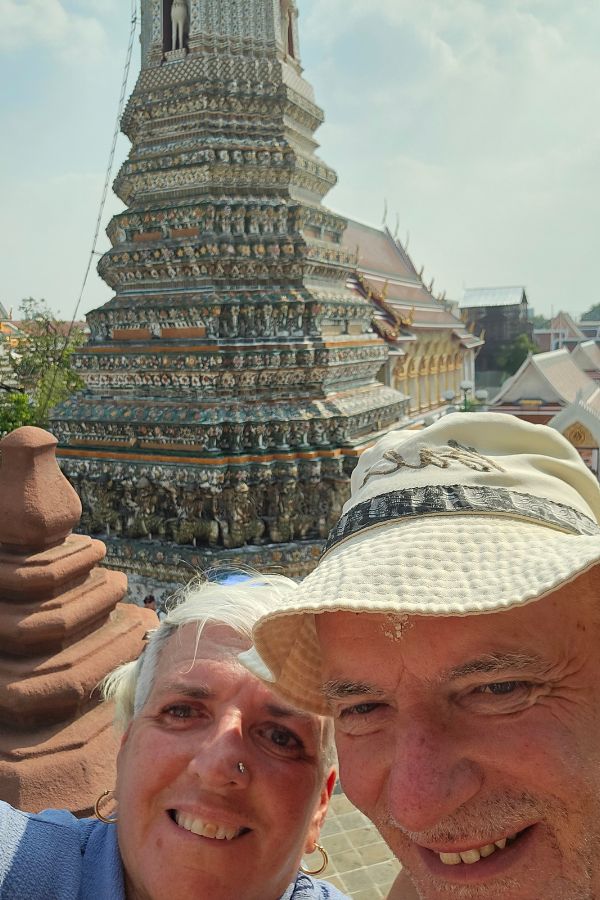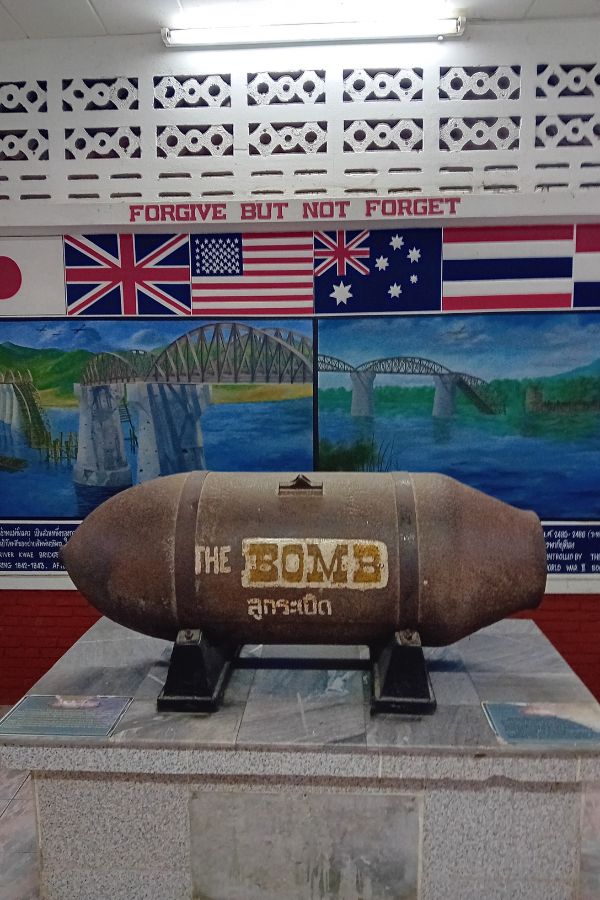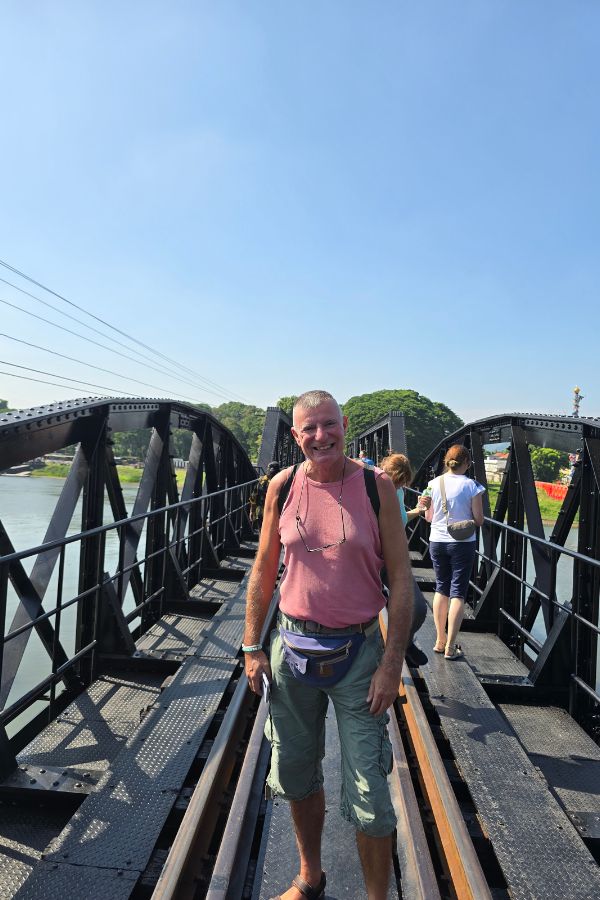Bangkok Hop On Hop Off Boat
For the first time in many years we returned to Bangkok in Thailand.
After a pleasant Thai Airways 11-and-a-hour flight from London Heathrow we arrived in the amazing chaos of this baking, wonderful city.
This time we stayed in Chinatown, which comes alive at night in a colourful cacophony of bars, eateries, neon lights and souped up Tuk Tuks with alloy wheels.
We stayed at 2499 Heritage, Chinatown, and installed ourselves in a comfortable room complete with a large bath and cracking view of the golden Wat Trai Mit Temple. (Temple of the Golden Buddha).
The hotel is in a great location but is a bit odd – see reviews.



After a nice meal out and a few Singha beers we had a good sleep, before exploring the temple and marvelling at its solid gold, five-and-a-half tonne Buddha.
This golden Buddha was only discovered when it was moved and the plaster covering it cracked
We were both luckily enough to be blessed by an orange robed monk at the sacred site.
Next, we took a hop on, hop off river tour and saw the metropolis from the water.
Ancient buildings mixed with modern architectural wonders as we cruised along.
We first got off at famous Khao San Road, the legendary starting point for many a traveller enjoying the delights of cannabis and beer before a trek to some palm tree fringed paradise.

It may have been a sunny Sunday afternoon, but we still got a flavour of the place where you can buy some hippy gear, get high and get a massage all in one go.


Our next stop was Wat Arun Temple (Temple of the Dawn).
This impressive, space rocket like structure was swamped with tourists from all over the globe.
It provided a backdrop for endless photo shoots of Thai girls dressed in their finest clothes posing artistically for Instagram.



We left the boat at Chinatown and returned to our digs before another nice meal and some beer.
Day trip to the River Kwai Bridge
At 06.30am the next day we left the baking traffic jam mayhem of Bangkok and took a tour to the bridge on the River Kwai.
And the story we found was a bit different to the 1957 David Lean film about the building of the Death Railway in WW2.
First stop was at the JEATH Museum at Kanchanaburi, created by one of the Japanese soldiers, Mr Takashi Nagase (Fujiwara), who after the war felt guilty and became a monk.
They’ve named it JEATH as it sounds better than Death.
But the museum’s name is also an abbreviation of the six countries involved in building the railway: Japan; England, America, Thailand and Holland.



In the pleasant, riverside location, the first thing you see is a video telling the story of how Japan subdued Thailand and then used Allied prisoners of war to build a 415km long rail link from Ban Pong, Thailand up to Rangoon in Burma.
Most of the railway was dismantled after WW2.
Only the first 130km of the line in Thailand remained, with trains still running as far north as Nam Tok.
Brutal is too small a word for the POWs’ plight, who were fed on salted rice and vegetables and forced to labour 18 hours a day.
Any perceived wrongdoing attracted torture, and there was no medicine to treat the sick.
The museum has a stockpile of rifles, swords, helmets and even a bomb.
It has also recreated a bamboo hut with sleeping platforms, just like prisoners’ basic accommodation.
Around the walls grainy black and white photos of gaunt, unsmiling, semi-naked men capture this miserable moment in time.
The captives just wore loincloths to prohibit concealed weapons.



Our band of 11 visitors were suitably sombre to learn that 12,000 POWs and more then 90,000 civilian labourers died due to disease and starvation before the line was completed on Christmas Day 1943.
They say every sleeper represents a dead body.
We then went on to the famous Kwai bridge, which has become a major visitor attraction.
It is a pristine, gloss black steel structure sat on concrete plinths.
The first thing we did was to lay down a poppy on one of the spans, as it was Remembrance Day.






When we were there it was swarming with picture-taking tourists of all nationalities, hopping between the rails to avoid each other.
In the film The Bridge On The River Kwai British soldiers designed and constructed a wooden bridge before an Allied commando unit was sent to demolish it.
It turns out the Japanese-designed bridge was steel, made in Indonesia in sections, and the original crossing was blown up by an Allied bomber.
The film is still great, though.
It is more important to remember all those poor souls who perished in the construction of that line less than 100 years ago.
From the bridge we hopped on an old, wooden seater carriage pulled by a 70-year-old diesel train and trundled across the bridge to cut through dense jungle and then farmed land beyond.
The train, which runs daily, smoothly curves along the Kanchanaburi river and has lovely views.
We had a great Thai buffet lunch at Tham Krasea station along the way, where we visited Krasae Cave – a former hospital / resting spot for the POWs, turned Buddhist shrine. The view is off the bend in the river and railway track and is known as the Death Turn.
To round off the trip we stopped at Kanchanaburi War Cemetery, where some 7,000 of the men who built the line are laid to rest and suffer no more.



Back in bustling Bangkok we were dropped off at the MRT (Mass Rail Transit) and took a subway train back to Chinatown.

Hours before we had walked around a war cemetery, a city of the dead.
We were now in a city which was very much alive, and we all owe a debt of gratitude to those who perished in conflict to allow us to so enjoy life.